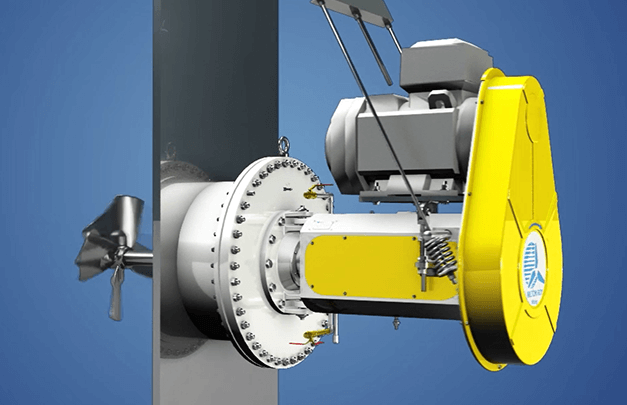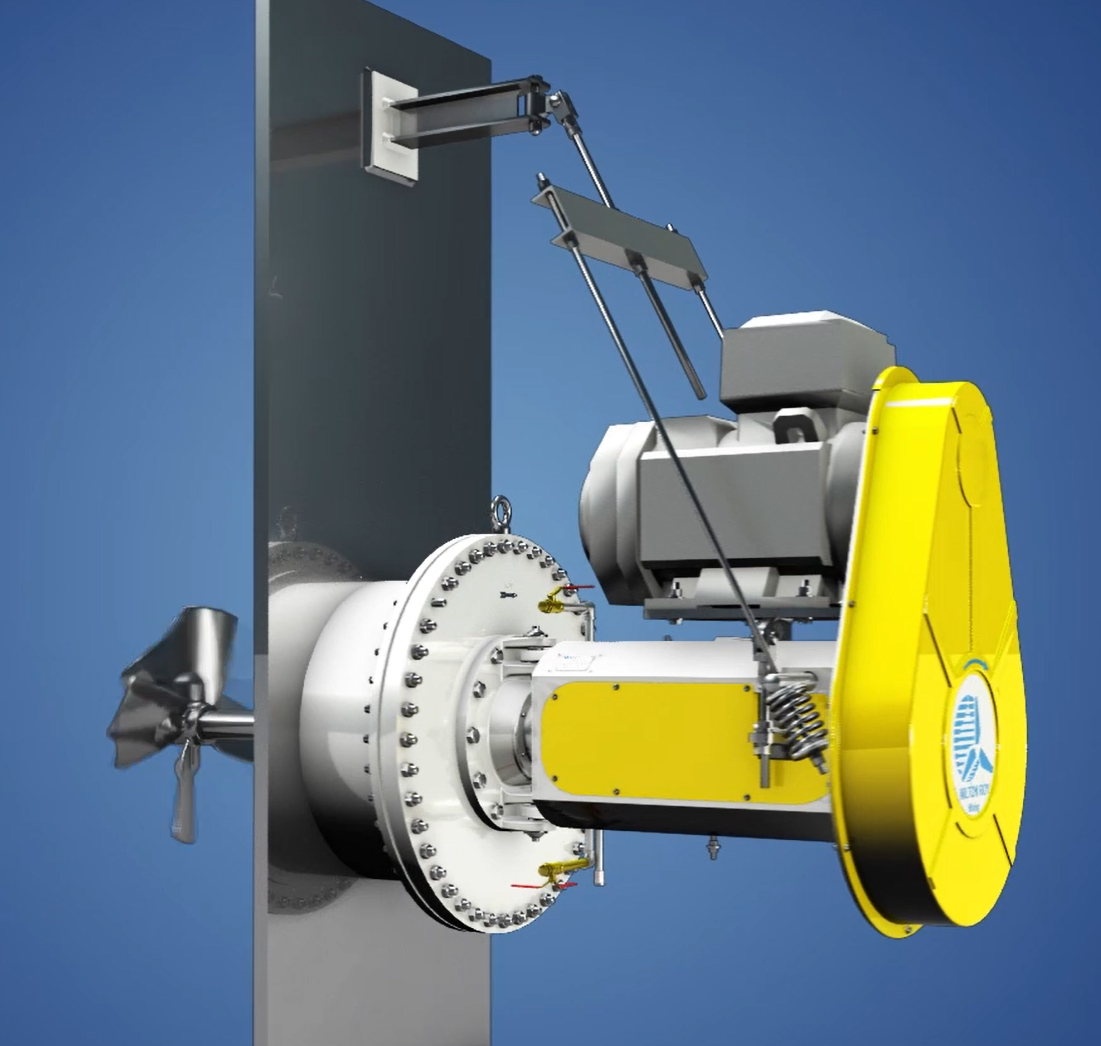The mixer: at its core, it’s a simple technology, but it supports mission-critical needs across a wide range of industries, including Oil & Gas, Chemical & Petrochemical, and Water & Wastewater. Within the world of Oil & Gas, the most common mixer application is blending within a storage tank, either to create a product that meets the specifications required by refineries or to prevent buildup of bottom sludge and water (BS&W) during storage.
Proper mixing helps with homogenization, maintaining temperature uniformity, achieving more accurate blends, and maximizing tank storage capacity by minimizing BS&W buildup. But which type of mixer should you choose for your specific application? In this article, we’ll look at the use cases of side-entry mixers and design considerations to help you achieve the greatest return on your mixer investment.
What to look for in a mixer
Our customers are generally looking for five main things when they come to us for a mixer. Whether they end up going with top-entry or side-entry, these basic requirements are always front of mind for us.
- Flow. Good flow patterns are essential to clean crude oil tanks. Flow is determined not only by the design of the mixer but also by the angle at which the mixer is installed, which affects the velocity distribution. For larger tanks, mixers may be strategically grouped together to create the best flow patterns.
- Performance. To determine performance, we look mainly at hydraulic efficiency and blend time. A good mixer can do its job efficiently, keeping BS&W under control while minimizing energy consumption.
- Reliability. Downtime is not an option for our customers, so design features that reduce the need for maintenance are key.
- Safety and Environmental Protection. Safety features like a quick shutoff device are especially desirable, as customers look to minimize the risk of leakage or spillage.
- Easy Installation and Maintenance. Easy to use, easy to clean, and easy to maintain: these are each a function of the mixer’s design, and a well-designed mixer will deliver ease of use on all fronts.
top-entry mixers vs. side-entry mixers
With these baseline criteria, the next step is to determine whether your tank needs a top-entry mixer or a side-entry mixer.

Which mixer is right for your application will depend on the geometry of the tank. If the tank is a cylinder that is taller than it is wide, a top-entry mixer is ideal. With a tank that is wider than it is tall, a side-entry mixer is the way to go. The selection of the impeller is then dictated by the process and the purpose of the mixer: does it need to blend, disperse gas, change fluid properties, adjust temperature, or something else?
We work with our customers to determine their exact needs and advise on mixer type and design. Once a top-entry or side-entry mixer has been selected, there are still design choices to be made — such as gear-driven or belt-driven and fixed angle or variable angle — which will affect mixer performance and ROI.
design considerations for side-entry mixers
At IPEC, our preferred side-entry mixer manufacturer is Milton Roy. There are four main reasons we recommend Milton Roy’s model, and they all come down to its advanced design features. These include:
- High-efficiency 4-blade SABRE impeller. These mixers feature the SABRE impeller from Milton Roy, which can achieve a 15-20% higher flow rate and a higher fluid velocity than the typical 3-blade impeller.
- 25% energy savings. Increased blending power means decreased blend time and lower energy consumption. In fact, this mixer provides a 25% energy savings over 3-blade impellers with the same flow.
- Quick shutoff device. The shutoff device on the Milton Roy mixer is unique in that it doesn’t feature any O-rings, which can potentially leak. The shaft is pulled toward the outside of the tank and uses the tank’s own pressure to help seal, which eliminates oil spilling risks during maintenance. It’s easy to use and doesn’t rely on a secondary shutoff device like other mixers we’ve seen.
- Longer mechanical seal life. The Milton Roy mixer has a single mechanical seal, and the mechanical seal cartridge has an integrated intermediate bearing. It’s designed to allow easy and safe access to the heart of the mixer for maintenance purposes, and maintenance costs are lower since the bearing replacement and mechanical seal face maintenance are done at the same time.
This mixer also has a small footprint and is easy to install, making it a favorite among our customers.
Do you think a side-entry mixer might be right for your application? Contact us to learn more about the benefits of the Milton Roy side-entry mixer.

